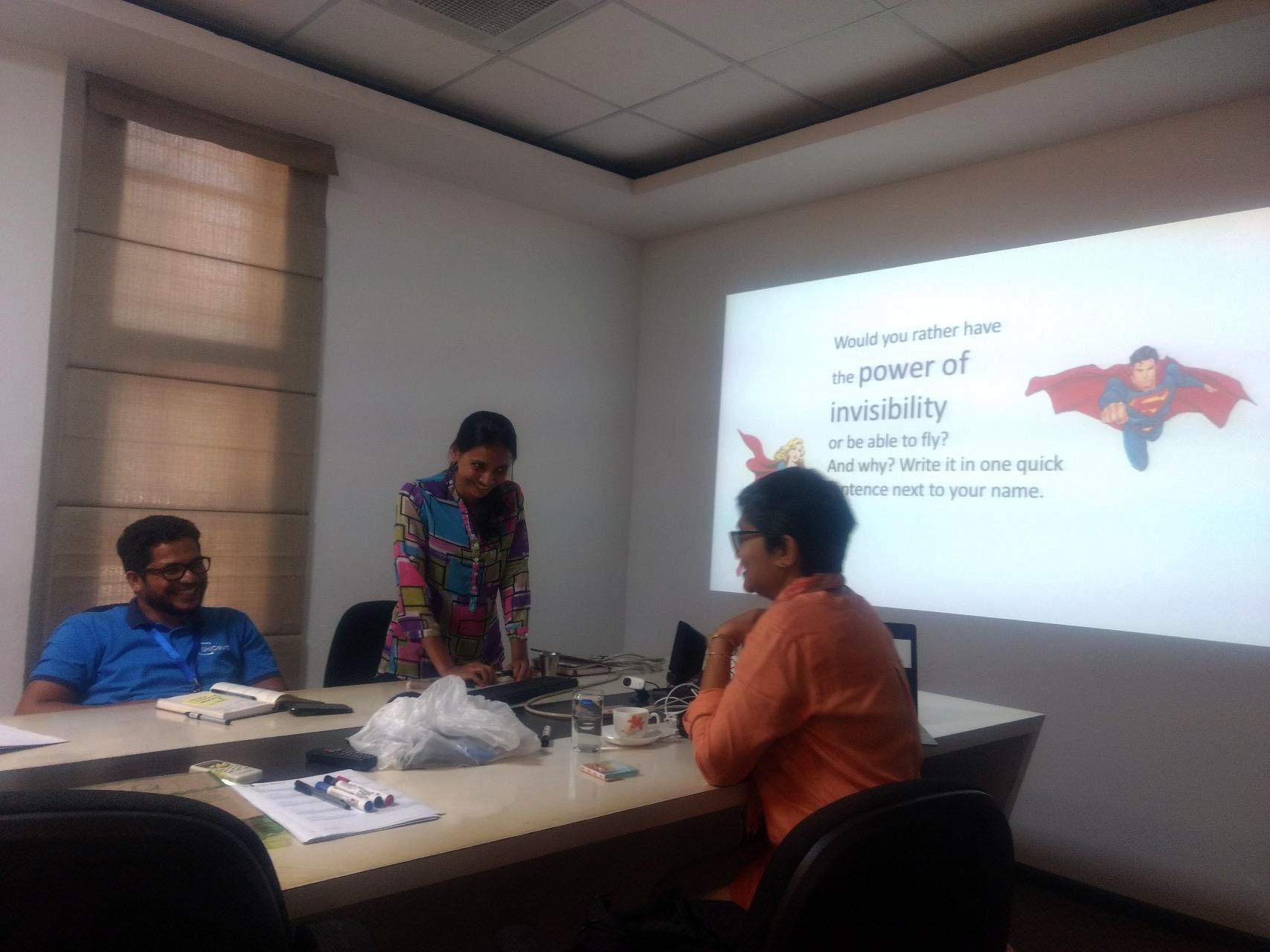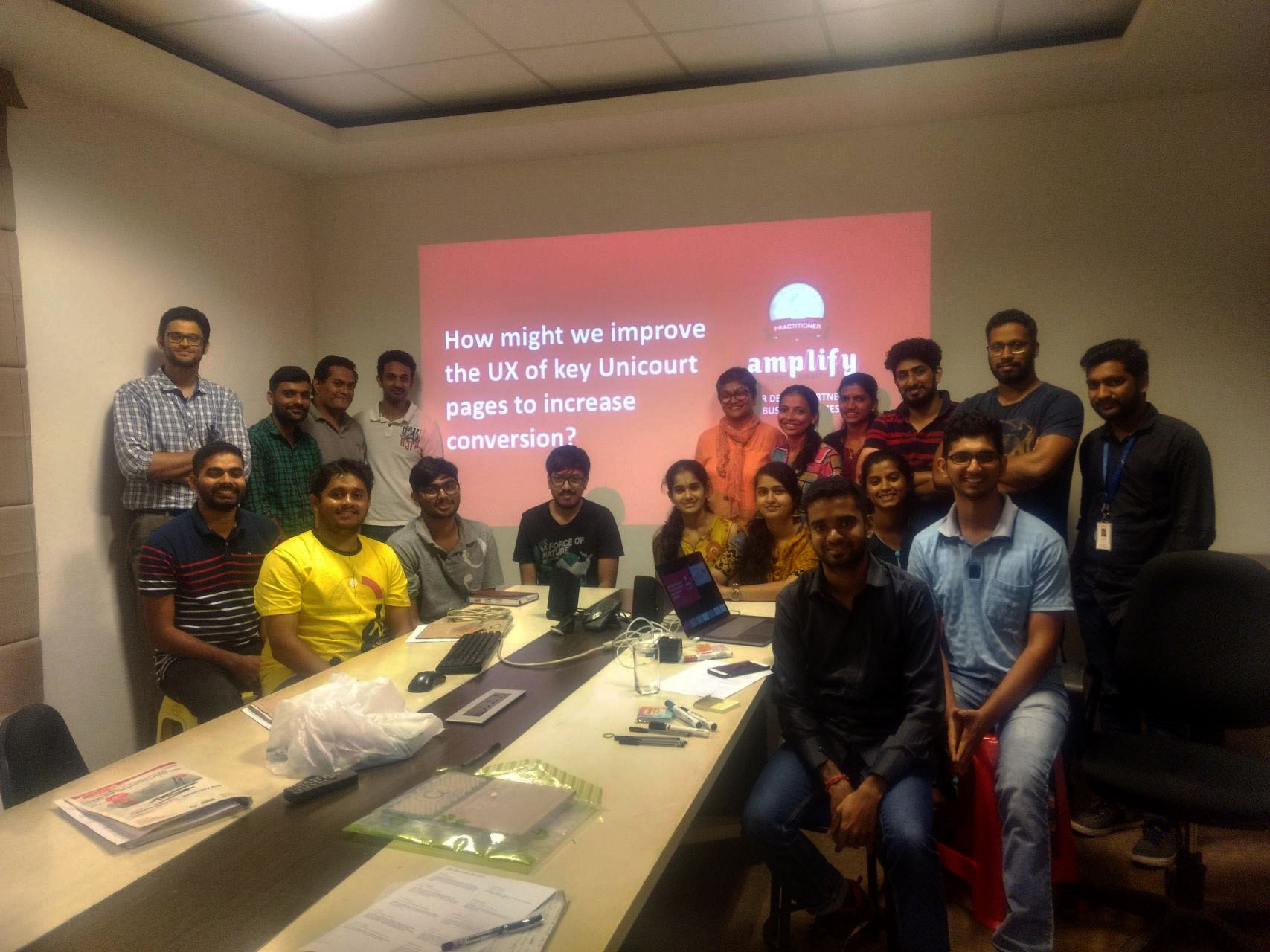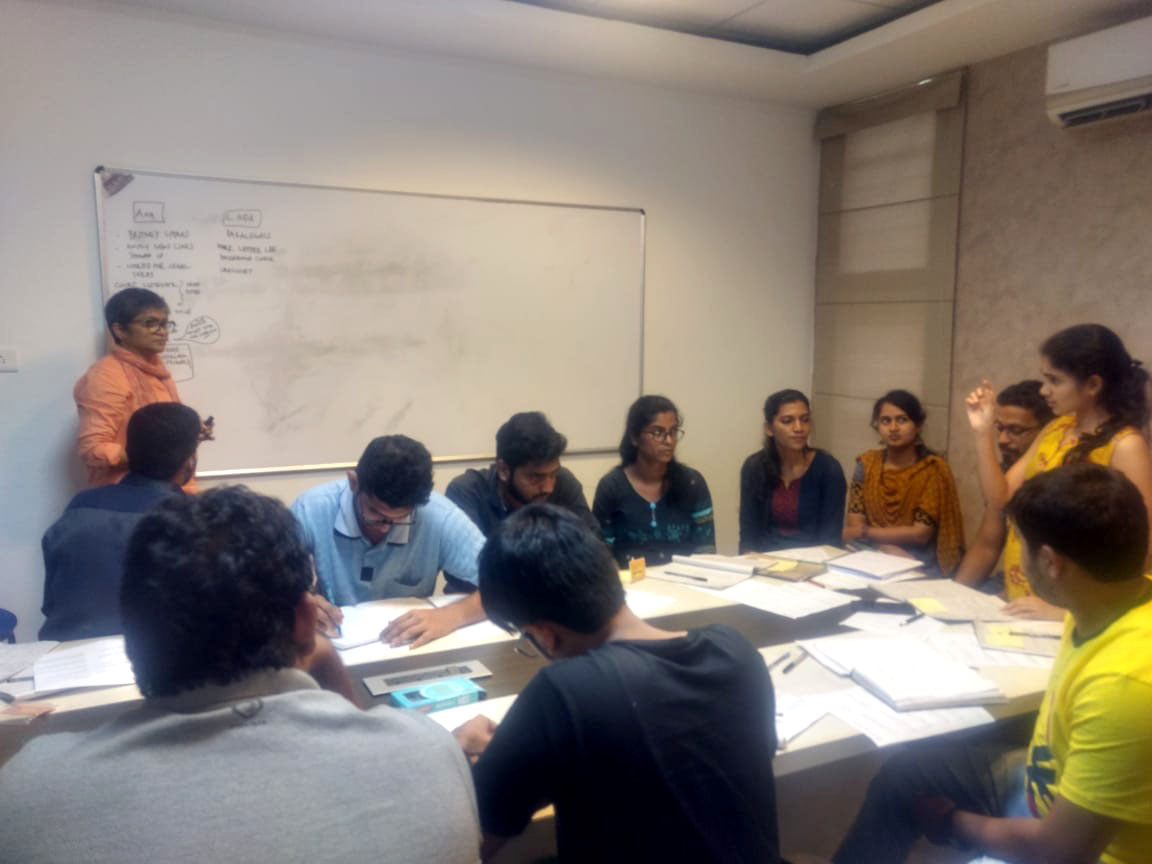As part of a design thinking engagement at UniCourt’s Mangalore, India office, I facilitated a Think Aloud testing workshop for UniCourt – a SAAS solution for accessing U.S. court records at the State and Federal Courts. UniCourt contains a searchable database of US civil court cases. The target audience is the legal profession and people involved in these cases.
Around 20 people, a mix of engineers, developers and a few others with SEO roles attended the workshop.
Think Aloud testing, the design thinking way
Think Aloud testing was first done at IBM in the 1980s and is an inexpensive and very effective way to test the usability of any application. Functionality issues can be recognized in an informal and easy to implement exercise.
At the UniCourt workshop, the entire team, in pairs – consisting of a user and the observer-note taker– googled for specific cases. During the exercise, the person with the user function in the pair verbalised their experience while looking for court case data on google, and how often the search engine served up UniCourt. Once inside the app, the user’s verbalisation shifted to how easy – or difficult – it was to find the information related to specific cases. The test user had to mimic a first time user seeking case specific information, keeping up a constant commentary on the experience.
Through this entire process the observer-note taker made detailed written observations.
The role of personas in the UniCourt Think Aloud testing exercise
Each user was given a persona, into whose shoes she had to get into. This role play encouraged each user to think like one of the many different kinds of end users who access UniCourt daily. The personas were vividly created, with real sounding names, ethnicities, professions, interest, quirks, age groups and differing technical proficiencies. This helped the team understand cultural differences, empathise with the end-user and made them realize that people access UniCourt for very different kinds of information.
The observer-note taker had to be Buddha-like, occasionally seeking clarity on why the user performed a specific task, but not guiding them in any way.
The entire exercise took about an hour and a half. At the end all the observers made a brief presentation on what they had learnt.
Persona speak post the workshop
Getting the cases to google is very important… we got out of our developer mindset…
we serve a much wider client base than I thought earlier
The SEO of ‘P….M…’ (a competitor) is worth checking out. I realise I need to work more effectively on SEO
We found competitive sites when we used only court case data, but when we use only legal terms, UniCourt pops up
Identifying app goals from the perspective of different users
One of UniCourt’s goals was to keep users coming back as free users and then eventually pay to sign up. Encouraging legal firms to sign up was another goal. Recruitment firms doing back ground checks on new hires were also being targeted. It was a revelation to the UniCourt development team, that their app’s usability had to be audited from the perspective of these very different user groups.
Why do a Think Aloud test with an external consultant?
Internal UX teams see the same interfaces and screens day in and day out. They navigate it almost on auto pilot, blind to its problems, and insensitive to difficulties external users might have. Often considerable time has been spent internally in developing the UX, and there is a resistance to making changes.
An external consultant brought in to critique the UX can look at it afresh and validate the design against set goals. She can detect features hampering set usability goals and recommend changes.
Measuring success
UniCourt measures its success by the number of new sign ups. While improved UX definitely increases the amount of time a user spends in the app and helps her find the information she is looking for, many other factors work in concerted ways to increase sign ups. A Think Aloud exercise is just the first, inexpensive step in this process.
Other design thinking methods to evaluate your app
Heuristic evaluation using a prescribed checklist is another way to test the efficacy of your app or website. Do read What is Heuristic Evaluation and Why Do You need it? A very useful blog post on why a heuristic evaluation of one’s product is vital.
Deepa Kamath
Based in Hong Kong – mostly – Deepa travels the world and writes about what interests her and its influences on her design work.


